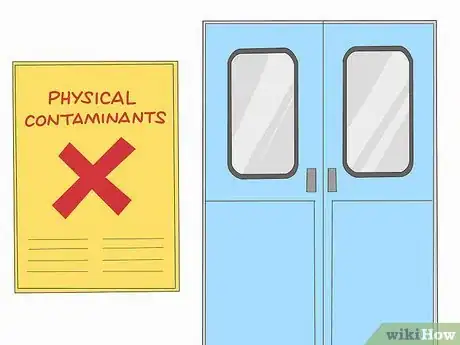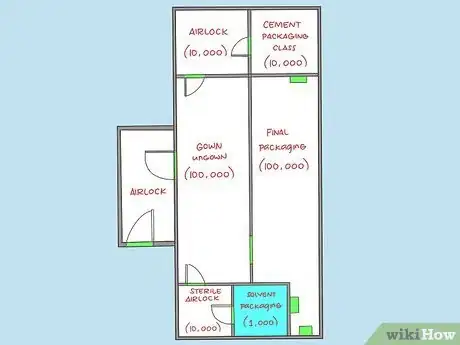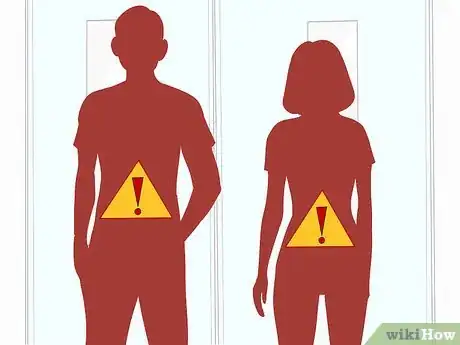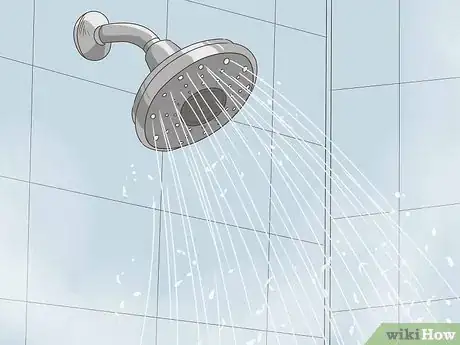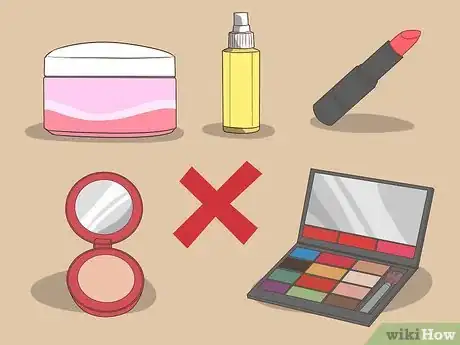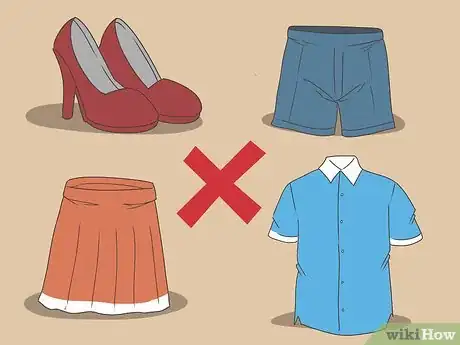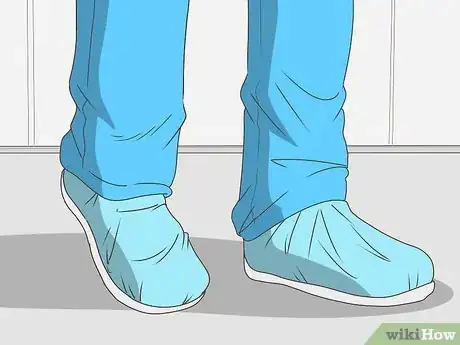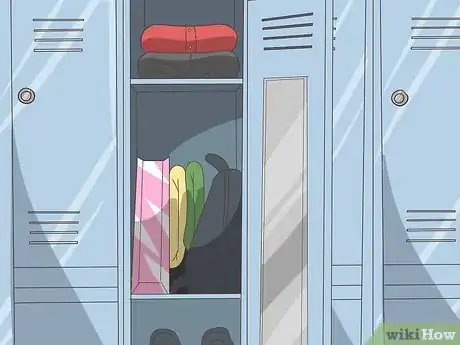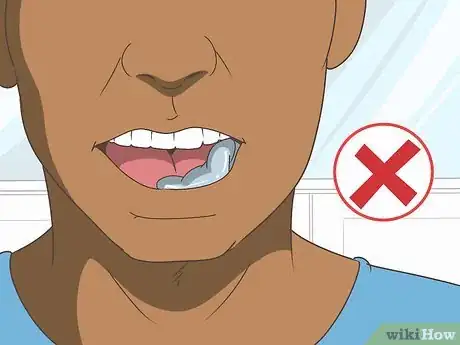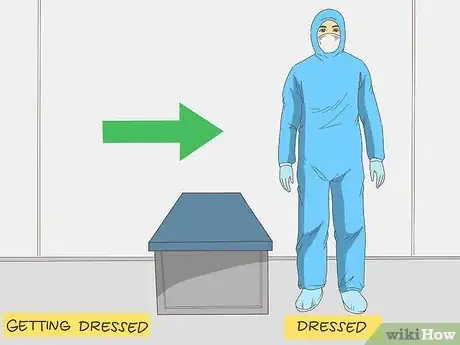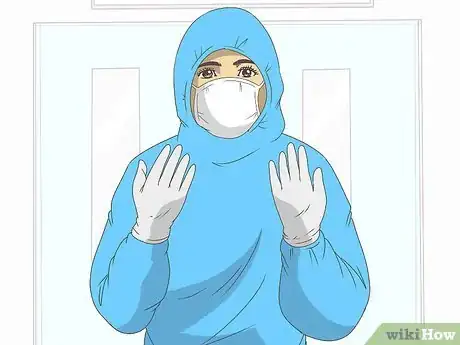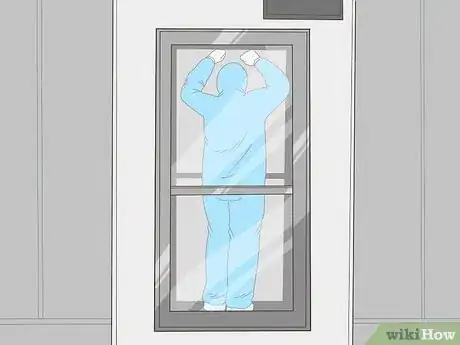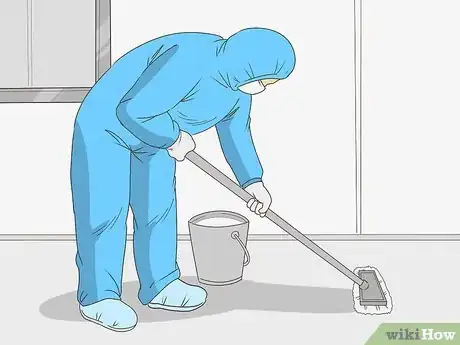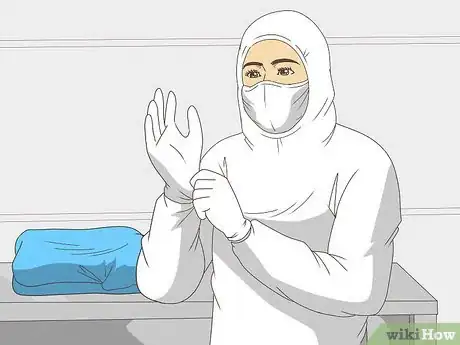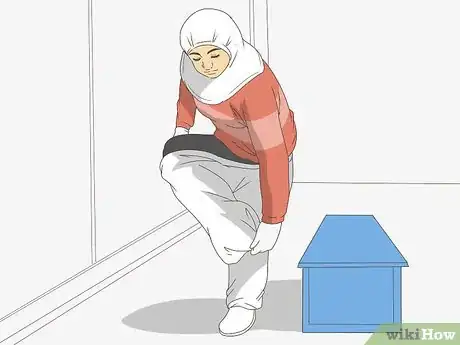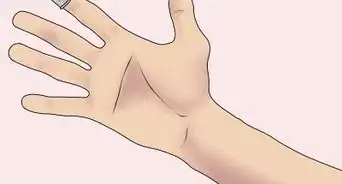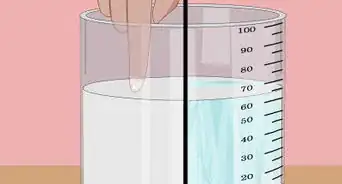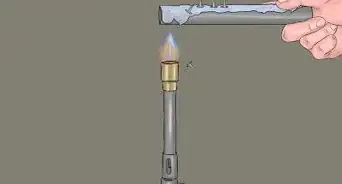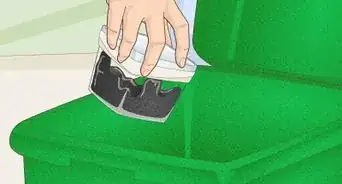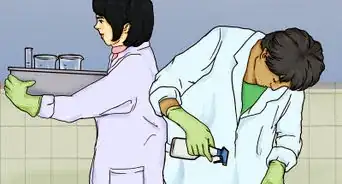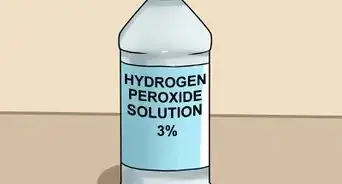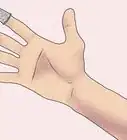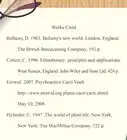wikiHow is a “wiki,” similar to Wikipedia, which means that many of our articles are co-written by multiple authors. To create this article, 26 people, some anonymous, worked to edit and improve it over time.
This article has been viewed 194,530 times.
Learn more...
A cleanroom is an environment, typically used in manufacturing or scientific research, that has a low level of environmental pollutants such as dust, airborne microbes, aerosol particles and chemical vapors. If you have been asked to work in one, you'll need to take the appropriate steps to avoid introducing contamination.
There is no single type of cleanroom or single set of rules for entering, so make sure to get training and instruction for the particular cleanroom you will enter.
Steps
-
1Understand the purpose of cleanroom protocol. Processors require clean rooms because any speck of dust can damage the processes that occur inside them. Physical contaminants include skin cells that flake off, dandruff, clothing fibers, and loose hair. Paper, pencils, packaging materials, and many other things shed dust, and even tiny particles can damage the delicate products built and tested in clean rooms.
-
2Know what class of cleanroom you're entering. There are a couple of different sets of standards, but in general, the lower the number, the cleaner the cleanroom.Advertisement
-
3Recognize that humans are generally the single largest source of contamination within a cleanroom.
-
4Follow the instructions given by your employer or whoever operates and maintains the cleanroom. Clean room apparel varies. It may consist of gloves, a cap, and smock at its most basic all the way up to a full "bunny suit". These are the general instructions.
-
5Take a Shower in the morning on any day you will enter a cleanroom.
-
6Do not wear cosmetics, hair spray, perfumes, or colognes into a cleanroom.
-
7Wear appropriate attire under your cleanroom garb. Skirts, high-heeled shoes, shorts, and in some cases, short-sleeved shirts are not appropriate attire. Also steer clear of clothing that is especially fuzzy or tends to produce a lot of lint or static electricity.
-
8Clean or change your shoes on the way in. Wherever possible, do not wear outdoor shoes into the cleanroom environment; change into a clean and appropriate pair of shoes dedicated for the lab environment
- If there is a machine at the door for this purpose (spinning brushes), use it. Place your foot and shoe together inside it. Hold the handle to steady yourself, then press the button. You'll feel a slight tug on your shoe from the moving brushes, but it won't damage your shoe.
- If there is an adhesive doormat, step on it several times.
-
9Stow personal items you won't be taking into the cleanroom. Leave them at your desk or use lockers, if they are provided.
-
10Discard candy, gum, or anything else in your mouth.
-
11Put on your cleanroom gear in the correct order. Top-to-bottom is a good general rule to follow, and it is a good idea to use a bench to separate the "dressed" area from the "getting dressed" area.
- Start putting on your cleanroom gear on the "getting dressed" side of the bench.
- Put on a hair cover (bouffant cap) and/or hood. Use a beard cover to cover any facial hair beard or mustache). Adjust hood when closing snaps on front and back so it is snug and comfortable.
- Put on coveralls or a smock. If in two parts, put on jacket first, then pants. Zip or snap it closed all the way up, over the neck of the hood if you are wearing one. Close any snaps at the cuffs to gather the sleeves snugly around your wrists.
- Sit on the bench to put on shoe covers or booties. Be sure to tuck pants inside the booties, and don't let the booties touch the ground on the "getting dressed" side of the bench. Alternatively, use an automatic shoe cover dispenser.
- Put on latex gloves, or the appropriate substitute for those allergic to latex. Tape sleeves and ankles if necessary.
-
12Act as if you are now a surgeon: don't touch anything until you are in the cleanroom. If it is necessary to touch surfaces or items, be sure to change the affected glove before entering the cleanroom.
-
13Pass through the air shower if there is one and step on any additional adhesive mats as you enter.
-
14Keep cleanroom protocol in mind whenever you work within a cleanroom.
- Keep your cleanroom apparel on at all times when working in the cleanroom.
- Do not bring in any of the following items: pencils (note that graphite is conductive), erasers, non-cleanroom paper, wood, abrasives, or packaging materials such as cardboard. Keep non-cleanroom paper in a plastic sleeve if you must refer to it. Use only cleanroom tape. Be aware of what else you bring in.
- Correctly wipe down any equipment you bring in. Do not remove cleanroom equipment from a cleanroom.
- Move slowly and evenly. Rapid, sudden, or jerky movements can shed many particles.
-
15Replace any cleanroom attire that is worn or soiled. Even cleanroom apparel gets dirty as you wear it and work in it. If it has been a while, make sure you have yours cleaned and get a fresh one.
- Use fresh gloves, hair covers, and disposable shoe covers every time you enter.
- You can reuse smocks, coveralls, reusable shoe covers, and reusable caps or hoods, but exchange or have them cleaned periodically.
-
16Remove cleanroom attire in the opposite order from that in which you donned it. Remove cleanroom attire each time you leave the cleanroom. Do not exit the cleanroom wearing or carrying cleanroom attire. Put it on each time you enter and take it off and store it correctly each time you leave.
Community Q&A
-
QuestionCould a wooden bench be used between the dressing and dressed area?
 Community AnswerNo. Wood cannot be used because wood houses various insects. It absorbs moisture, leading to microbial growth.
Community AnswerNo. Wood cannot be used because wood houses various insects. It absorbs moisture, leading to microbial growth. -
QuestionDo I need to tape my wrists when in a clean room?
 Community AnswerIt depends on the requirements of the exact room, but in general it's a good idea to tape your wrists.
Community AnswerIt depends on the requirements of the exact room, but in general it's a good idea to tape your wrists. -
QuestionWhat type of poster frames can be used inside the cleanroom?
 Community AnswerTry to keep them out of critical class A areas, and have necessary ones posted on the other side of a viewing window. The less equipment/furniture, the better.
Community AnswerTry to keep them out of critical class A areas, and have necessary ones posted on the other side of a viewing window. The less equipment/furniture, the better.
Warnings
- Never eat, drink, or smoke in a cleanroom.⧼thumbs_response⧽
- In the event of a fire or evacuation alarm, do not stop to remove your cleanroom attire. Follow posted exit routes if available and directly exit the facility. After emergency is over, obtain new cleanroom attire before entering the cleanroom once more.⧼thumbs_response⧽
- Understand any safety issues involved in working in a cleanroom. There may be hazardous materials, heavy equipment, high temperatures, sharp objects, tight spaces, and high voltage. If you are working alongside any of these or other hazards, be sure you are properly trained for them. Understand and follow the proper precautions.⧼thumbs_response⧽
References
- Intel's discussion on entering their very clean cleanrooms. Your cleanroom experience may be very different from the detailed procedure they describe.
- Introduction to Cleanrooms, Vanderbilt University.
